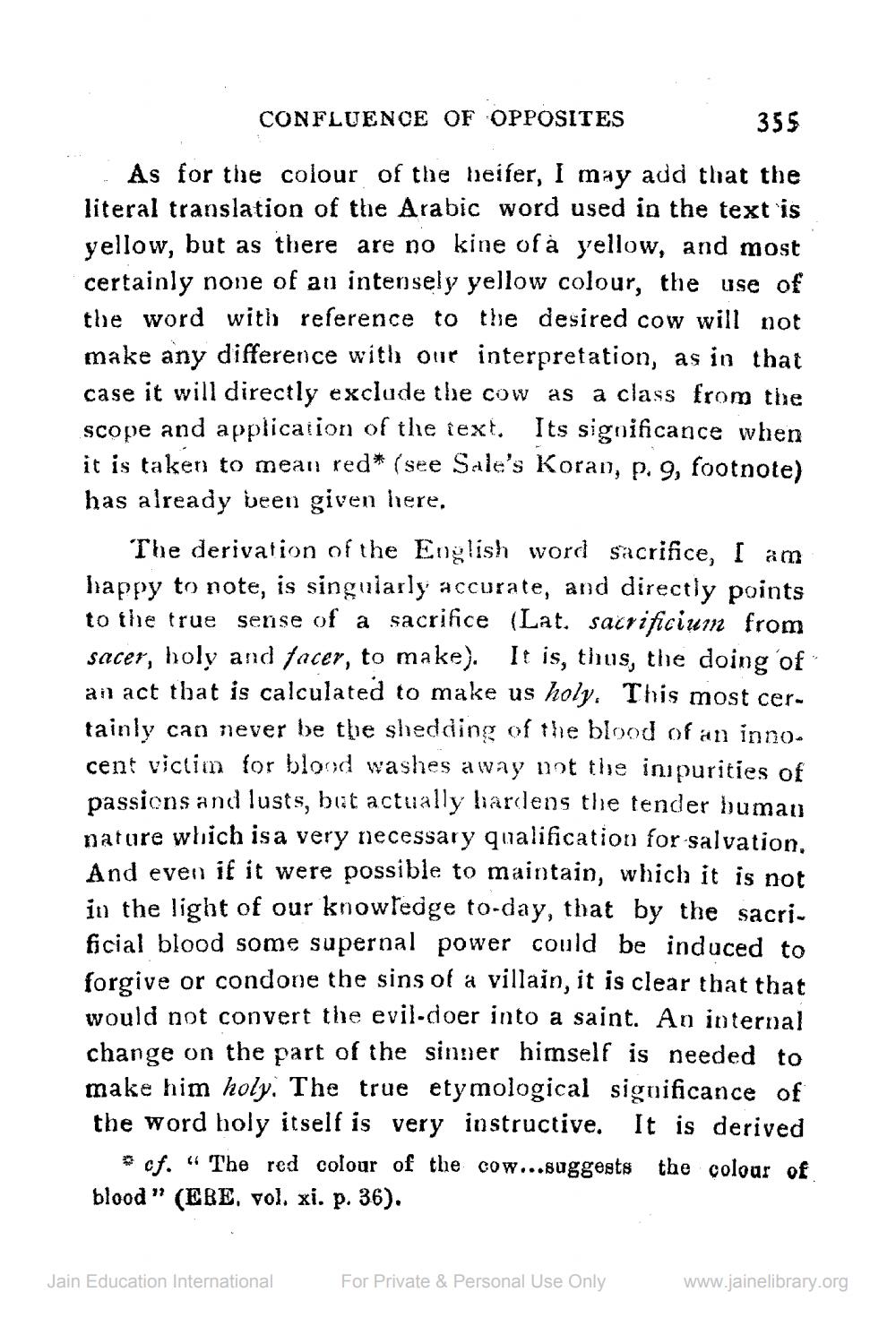________________
CONFLUENCE OF OPPOSITES
355
As for the colour of the heiser, I may add that the literal translation of the Arabic word used in the text is yellow, but as there are no kine of a yellow, and most certainly none of an intensely yellow colour, the use of the word with reference to the desired cow will not make any difference with our interpretation, as in that case it will directly exclude the cow as a class from the scope and application of the text. Its significance when it is taken to mean red* (see Sale's Koran, p. 9, footnote) has already been given here.
The derivation of the English word sacrifice, I am happy to note, is singularly accurate, and directly points to the true sense of a sacrifice (Lat. sacrificium from sacer, holy and facer, to make). It is, thus, the doing of an act that is calculated to make us holy. This most certainly can never be the shedding of the blood of an inno. cent victim for blood washes a way not the inipurities of passions and lusts, but actually liardens the tender bumau nature which is a very necessary qualification for-salvation. And even if it were possible to maintain, which it is not in the light of our knowledge to-day, that by the sacri. ficial blood some supernal power could be induced to forgive or condone the sins of a villain, it is clear that that would not convert the evil.doer into a saint. An internal change on the part of the sinner himself is needed to make him holy. The true etymological significance of the word holy itself is very instructive. It is derived
cf. “ The red colour of the cow...suggests the coloar of blood" (EBE, vol. xi. p. 36).
Jain Education International
For Private & Personal Use Only
www.jainelibrary.org




